Borghese
Sat Dec 02, 2017 11:18 amBorghese Gallery nestled in the vast Villa Borghese Gardens, high atop a bluff overlooking the entrance to Rome, is a Palace Museum displaying the private art collection of Cardinal Borghese.
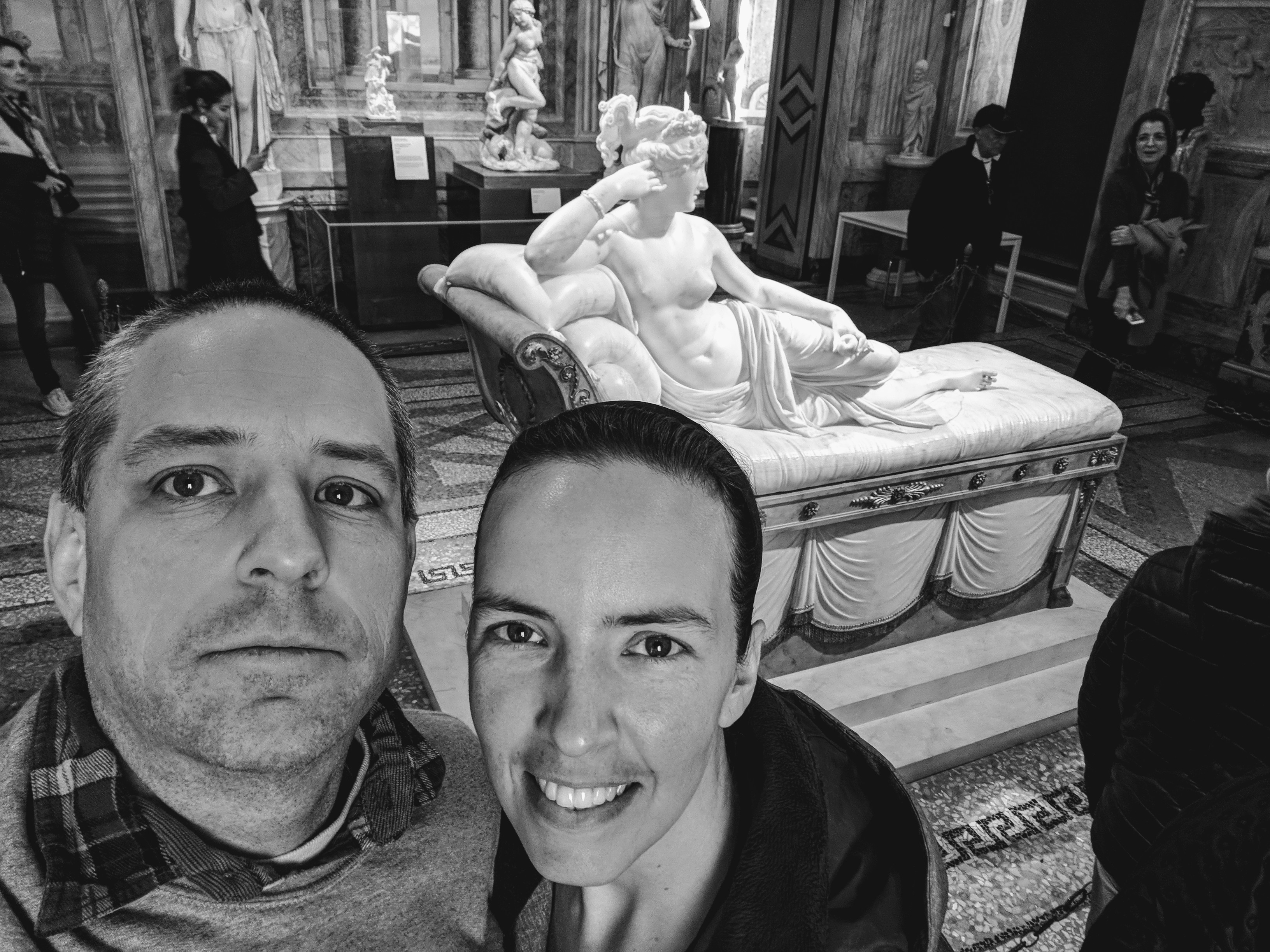
Napoleon’s sister is a looker. Canova, who was a neo-classical sculptor, casts here as Venus Goddess of Love with an ancient hairdo.
So what exactly does neo-classical mean? There is a linear progression in art style. Renaissance art rediscovers the skill and realism of Ancient Rome and Greece. But then there is a linear progression from Mannerism, Baroque, and Rococo, in which realism gives way to ever-increasing idealism and fantasy. But then finally we reach the Age of Reason, the pendulum swings all the way back to the beginning, and we start over with neo-classical art.
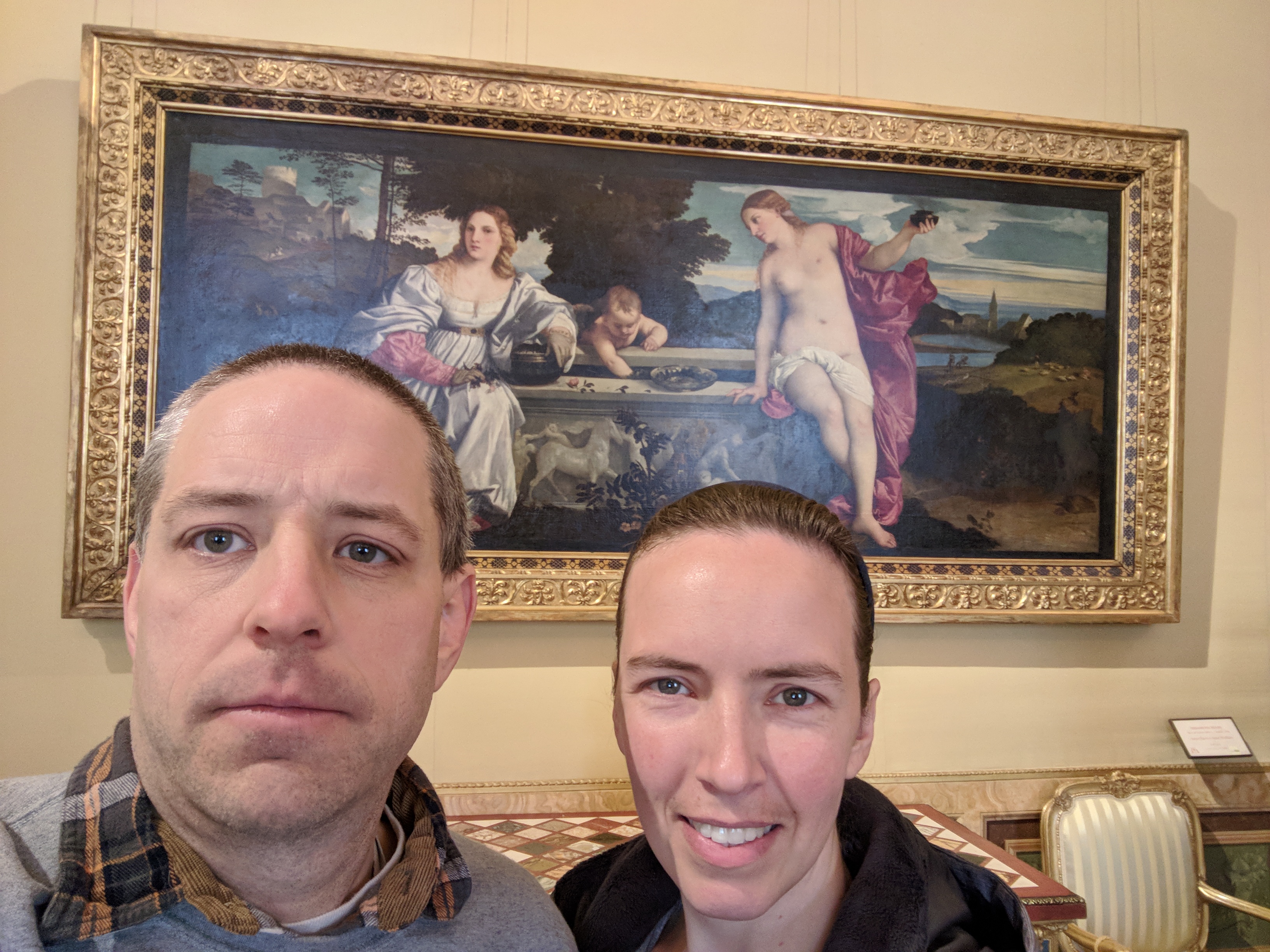
Sacred and Profane Love by Titian is Renaissance art. You have characteristic anatomical realism, proportion, and detail, as well as perspective via the use of color and converging geometry in the landscape.
Profane means secular. The figure on the left represents Profane Love and must wear clothes, but the figure on the right represents Sacred Love, and thus has nothing to hide.
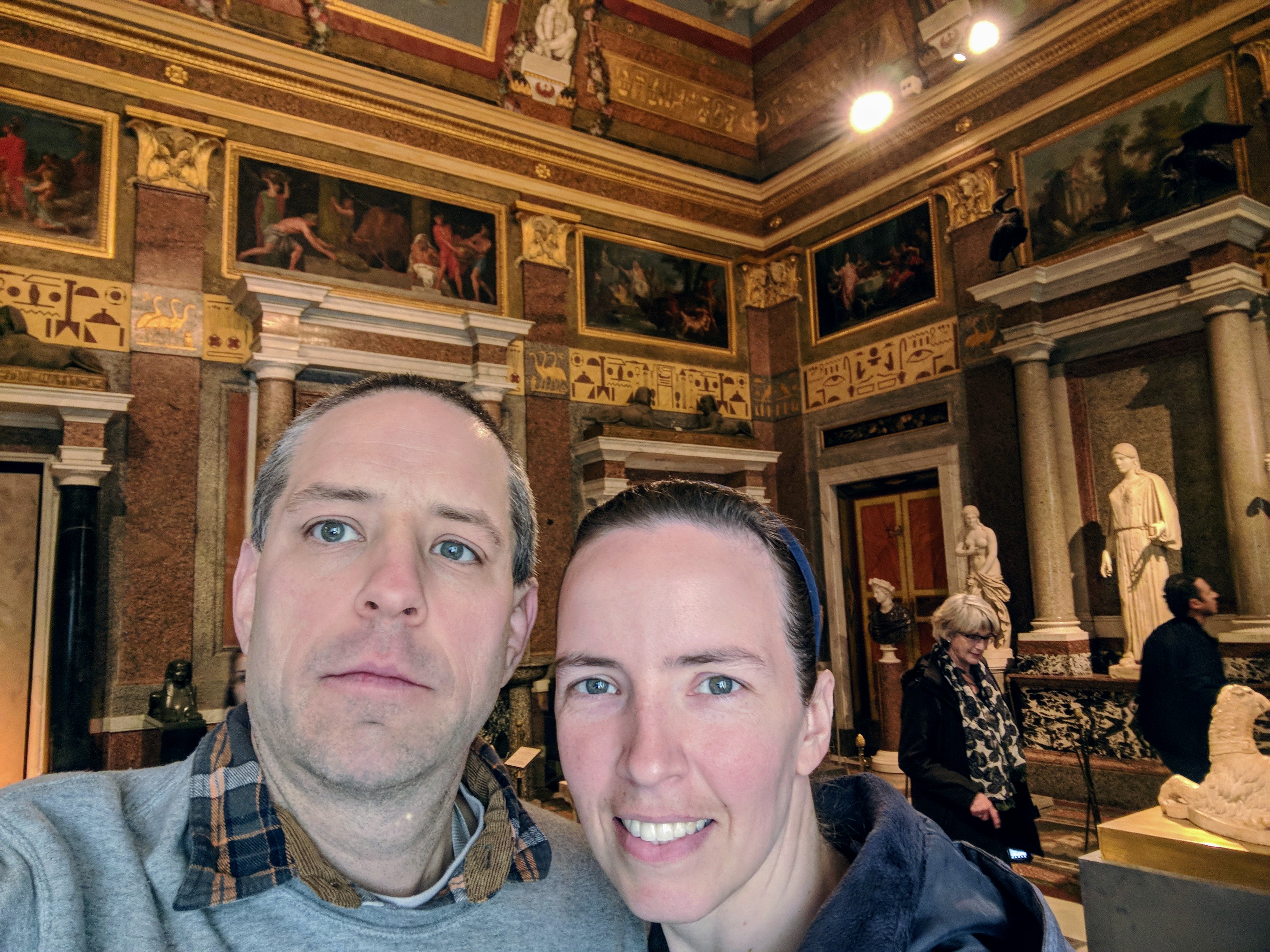
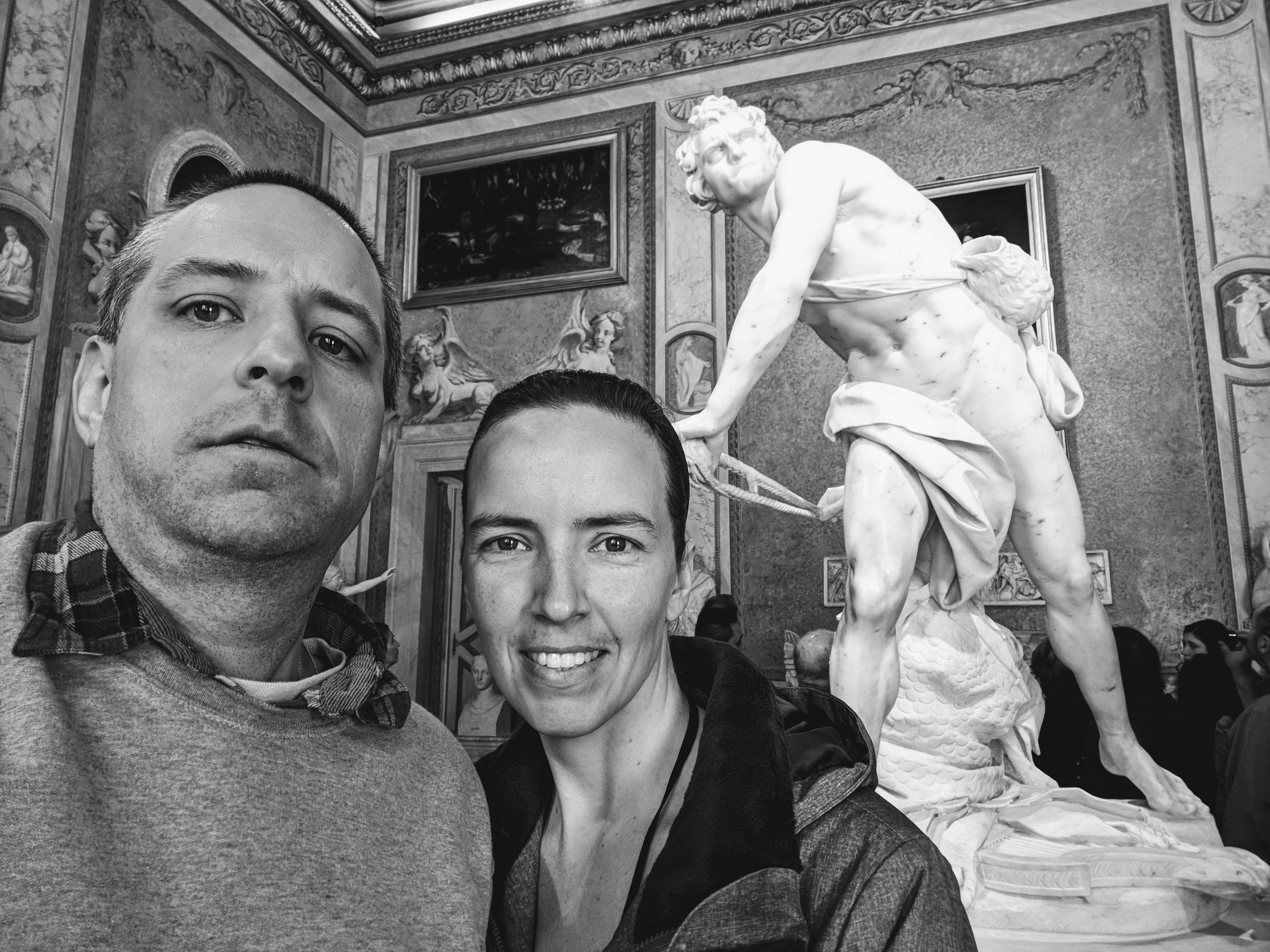
Bernini is the first name in baroque Rome.
Contrast Bernini’s David with Michelangelo’s Renaissance Statue of David. Bernini’s David has action, and that is what makes it baroque.
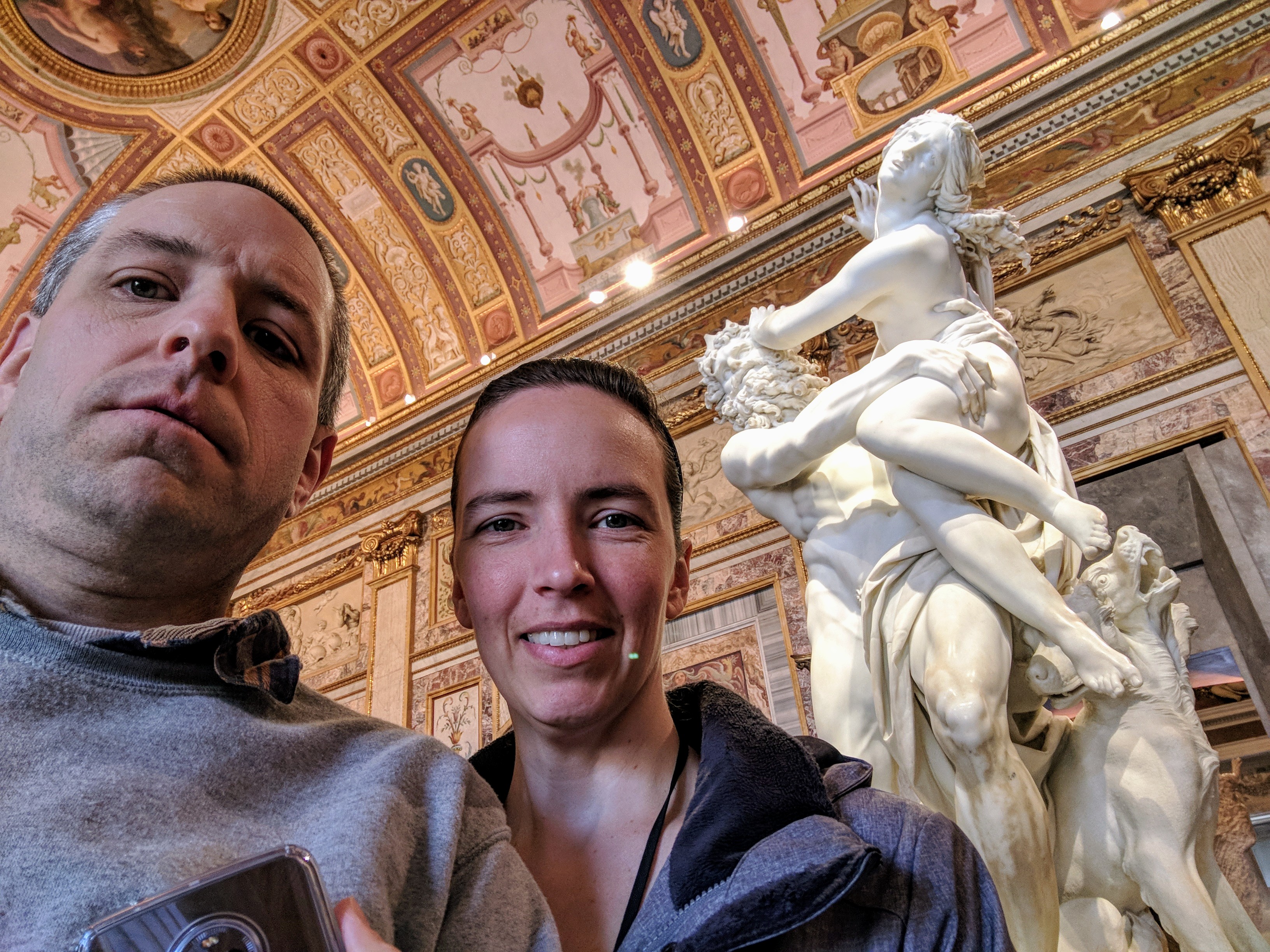
In Bernini’s Rape of Persephone, Hades God of the Underworld abducts Persephone, a vegetation goddess, Daughter of Zeus and Demeter, where she will become Queen of the Underworld.
The action is palpable and baroque.
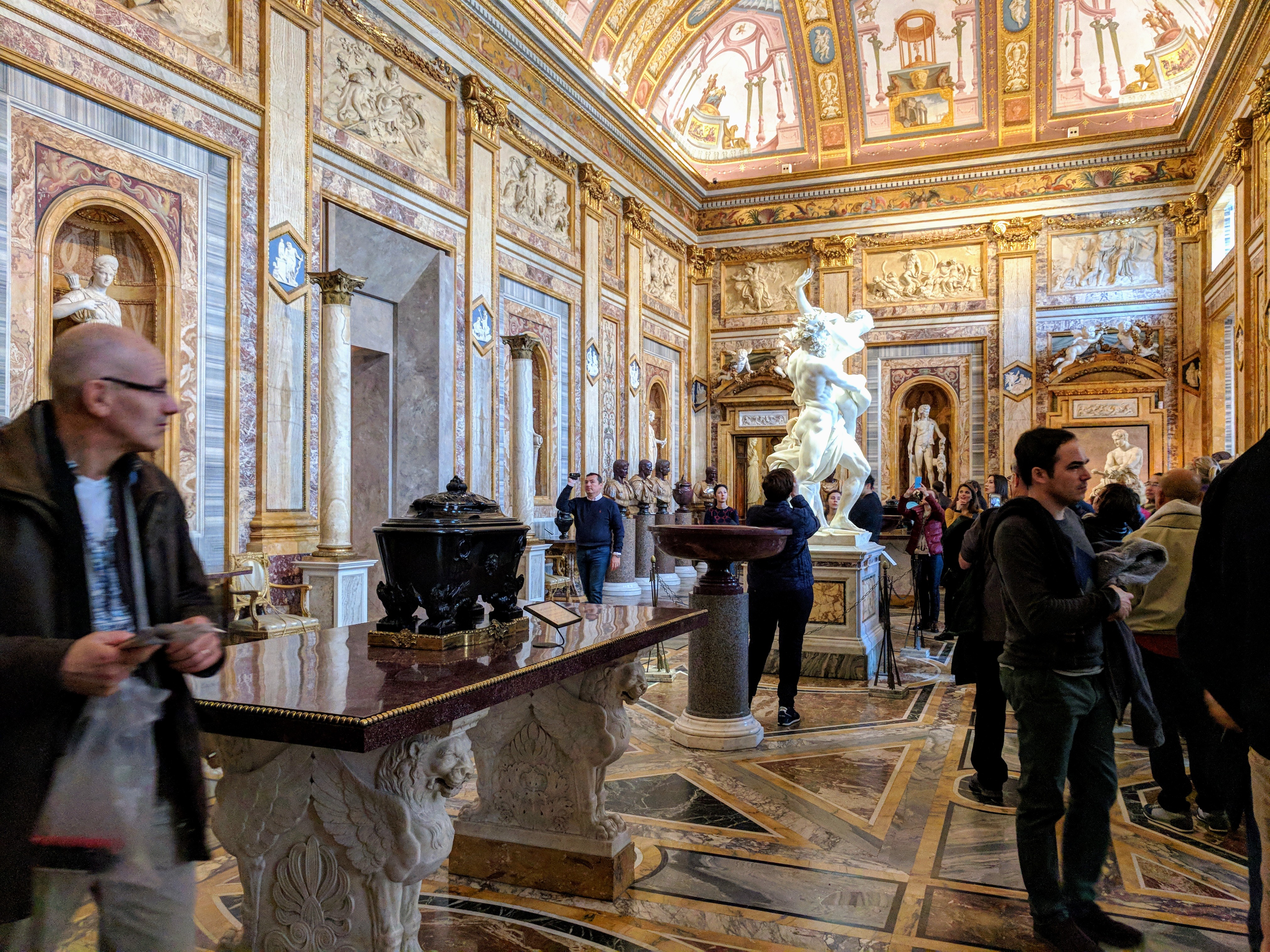
Imperial Porphyry is extremely rare and valuable and there is none left in the natural world that has not been extracted.
I think using such a rare and precious material as a table speaks to the opulence of Borghese Palace.
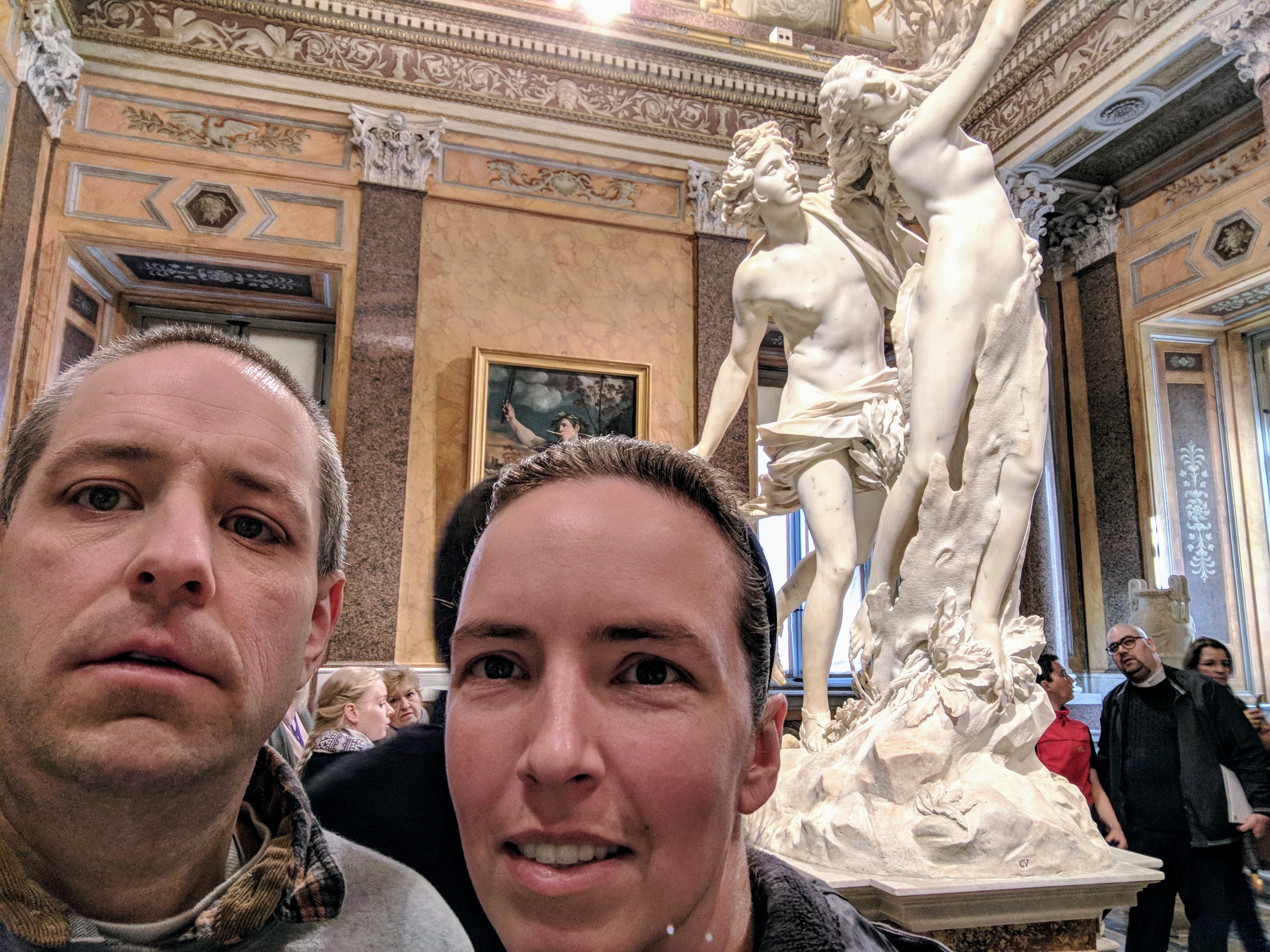
Bernini’s Daphne and Apollo demonstrates Bernini’s amazing skill in transforming marble stone into delicate foliage.
Alas as Apollo tries to have Daphne, she escapes by turning into a tree, but the action is baroque and palpable!
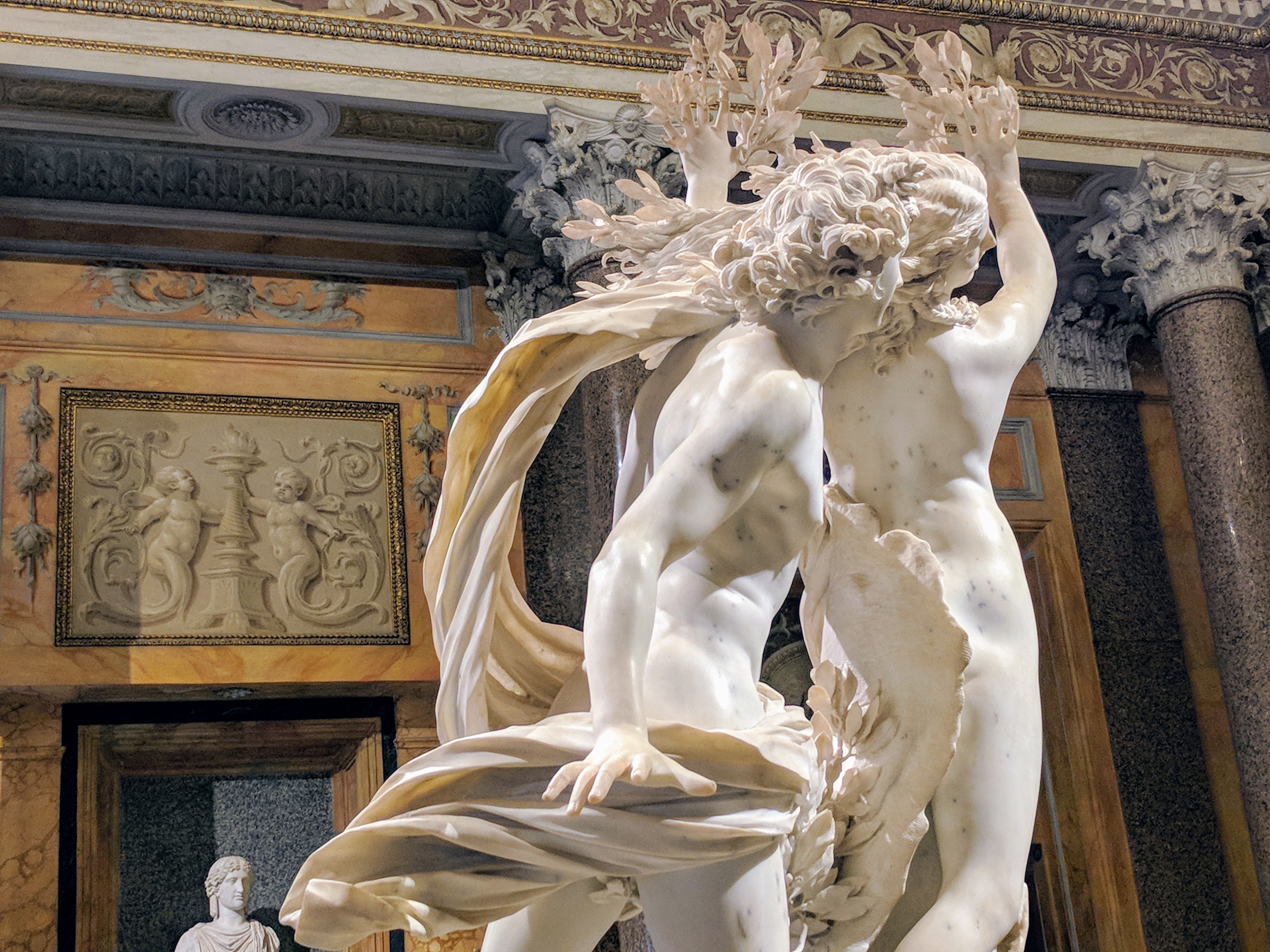
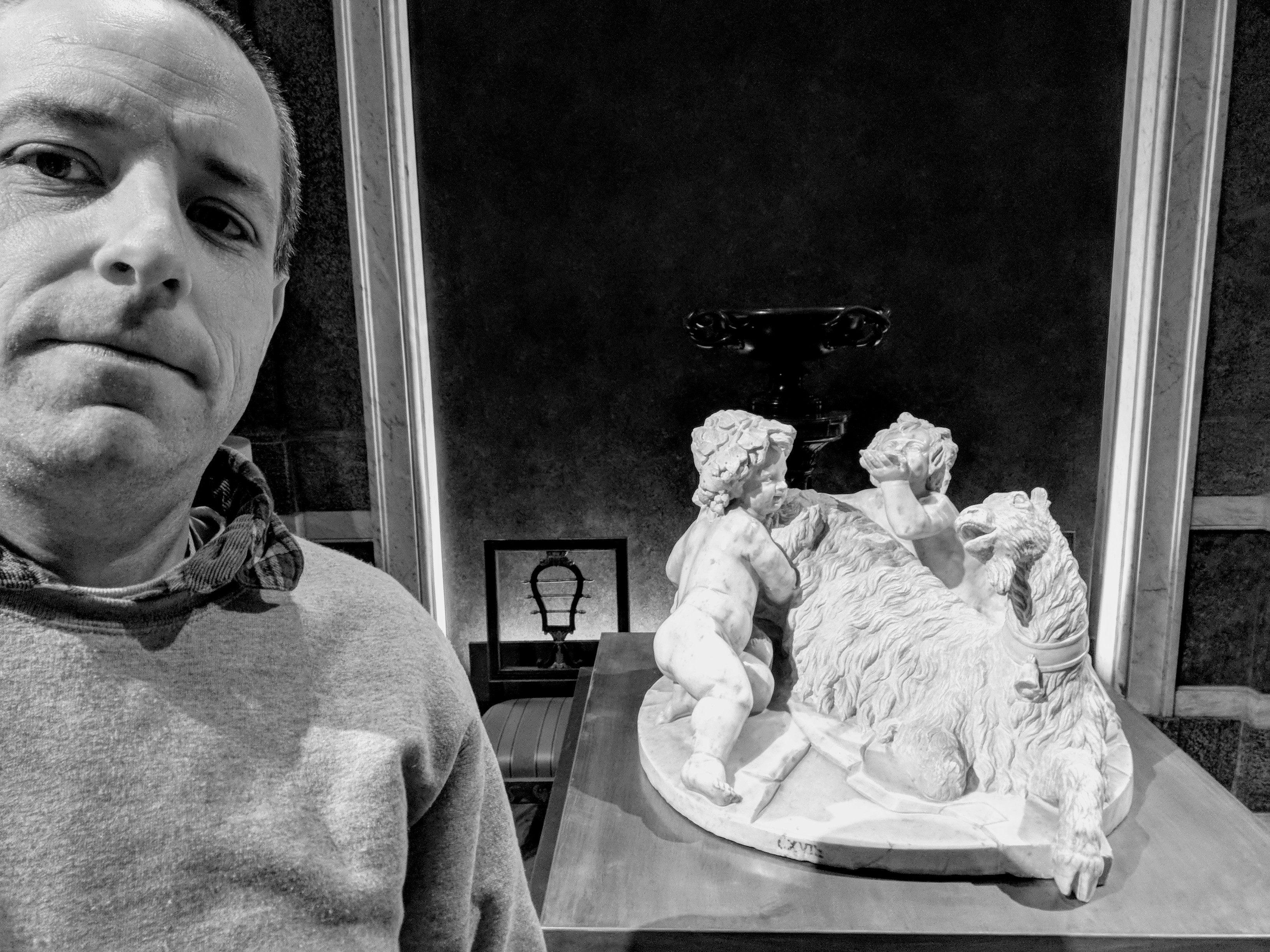
The Goat Amalthea with the Infant Jupiter and a Faun demonstrates Bernini’s skill in combining several figures into a single sculpture.
There seems to be some goat-milking going on here! That’s all I’m going to say.